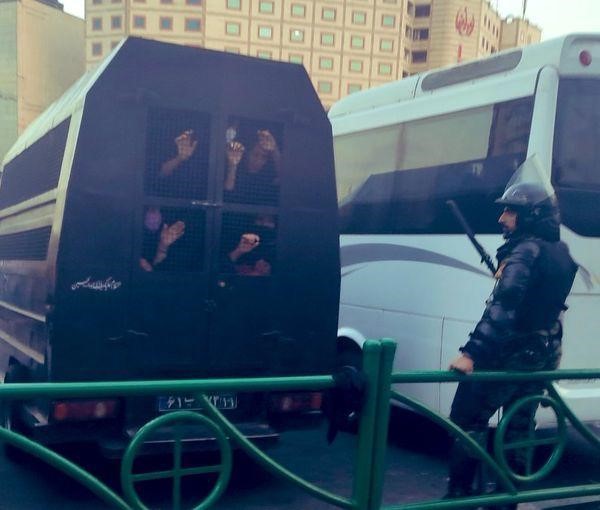More than two months after the September uprising in Iran, sexual violence in detention centres has found its way to International news outlets. How does the Islamic Republic use sexuality as a means of control? Is sexualising socio-political activities of Iranian citizens (women in particular) a new phenomenon under the Islamic Republic?
The voice of protesters demanding their basic human rights is being suffocated by violence and sexual abuse in Iran. The protests began after the brutal death of Mahsa (Zhina) Amini in the custody of the morality police on September 16. Allegedly, Mahsa did not observe the hijab rules under the Islamic Republic. She was beaten, went into a coma, and never woke up. Her dead body was returned to her family who refused to remain silent despite being threatened. Mahsa and her fellow women in Iran are the youngest of many generations who have tirelessly kept fighting for their basic civil rights despite facing violence. Since the beginning of the uprising, thousands have been arrested. Many had the fate of Mahsa, while others are being beaten, tortured and raped in detention centres. Sexualising demands for basic human rights in the ideological value system of the Islamic Republic is not new.
Now, we can hear about it because of social media and because the uprising started by women according to Maziar Bahari, human rights activist and filmmaker. In his talk with Christian Amanpour, Bahari recalls the words of the founder of the Islamic Republic in Iran, Ruhollah Khomeini (d. 1989): “If women have the right to vote, they are going to be prostitutes.” This was years before the 1979 Revolution, when Mohammad-Reza Shah (d. 1980) gave women and minorities the right to vote in 1963. Bahari also remembers the sexual violence towards women prisoners in the 1980s in Iran. Among these women, those who were virgins were forced to “get married” to revolutionary guards to get raped so that they could be executed according to the sharia law as explained by the Islamic government.
For Mazyar Bahari’s talk with Christian Amanpour click here.
For the authorities in Iran, both women’s uprising for their rights, and the way to suppress it are sexual matters. The conservative Islamist women’s opinion about demands for bodily integrity is a telling example of the ideological system. Trying to alarm the Islamic society of the loss of piety and modesty, they refer to women’s unveiling in public places as “nudity”. Finding the reason for this approach by Islamic authorities in Iran demands in-depth investigation, but Paula Sanders’ research about gender in the Medieval times may give us a clue. Women in the Medieval Islamic societies were considered as fitna (sedition). Women were considered “the major site of social disorder (fitna) by medieval jurists and commentators as well as in popular literature.’’(Sanders 1991, 75) Women’s sexuality was potentially dangerous in the Medieval Islamic imagination of the authorities. The danger was located among women, but more dangerous was “the possibilities of their illicit relationships with men.”(Ibid.) The force and sexual violence involved in suppressing protesters reveals the fear of women’s bodily autonomy. The phallocratic authorities in Iran are having the nightmare of losing control over women and their sexuality.

Source: Activists Report Torture, Sexual Abuse Of Detained Protesters In Iran (iranintl.com)
For a Persian translation of this blog click here.
Sources
Mazyar Bahari’s talk with Christian Amanpour: https://fb.watch/h3uQT7QtH8/
Sanders, Paula. ‘Gendering the Ungendered Body: Hermaphrodites in Medieval Islamic Law’ In Keddie and Baron (eds.), Women in Middle Eastern history: Shifting boundaries in sex and gender, 74-95. New Haven, 1991.
Further reading
Afary, Janet. ‘On the Origins of Feminism in Early 20th-Century Iran’. Journal of Women’s History 1, no. 2 (Fall 1989): 65-87.
Afary, Janet. Sexual Politics in Modern Iran. New York, Cambridge University Press: 2009.
Milani, Farzaneh. ‘Love and Sexuality in the Poetry of Forugh Farrokhzad: A Reconsideration’, Iranian Studies, vol. 15, No. 1/4 (1982): 117-128.
Milani, Farzaneh. Veils and Words: The Emerging Voices of Iranian Women. New York, Syracuse University Press: 1992.
Talattof, Kamran. ‘Personal Rebellion and Social Revolt in the Works of Forugh Farrokhzād: Challenging the Assumptions’. In Forugh Farrokhzad, Poet of Modern Iran: Iconic Woman and Feminine Pioneer of New Persian Poetry, edited by Dominic Parviz Brookshaw and Nasrin Rahimieh, 83-99. London: I.B. Tauris, 2010.
Talattof, Kamran. Modernity, Sexuality, and Ideology in Iran: The Life and Legacy of a Popular Female Artist. Syracuse, New York, Syracuse University Press: 2011.
For more on the centuries-long struggle of Iranians, particularly women, for claiming their rights and dignity read my interview in the Dutch newspaper Trouw: Ook in de tijd van dichteres Parvin E’tesami gold poëzie in Iran al als protest.
For more on the sexual violence and abuse of the protestors, visit: Iran protests: Covert testimonies reveal sexual assaults on male and female activists as a women-led uprising spreads (cnn.com)
For examples of sexual harassment and women who defend their rights and personal integrity in medieval Islamic literature, see .#MeToo in Persian Poetry – Beyond Sharia
© Zhinia Noorian and the Beyond Sharia ERC Project, 2023. This project has received funding from the European Research Council (ERC) under the European Union’s Horizon 2020 research and innovation programme (Grant agreement No. 101020403). Any unlicensed use of this blog without written permission from the author and the Beyond Sharia ERC Project is prohibited. Any use of this blog should give full credit to Zhinia Noorian and the Beyond Sharia ERC Project.

